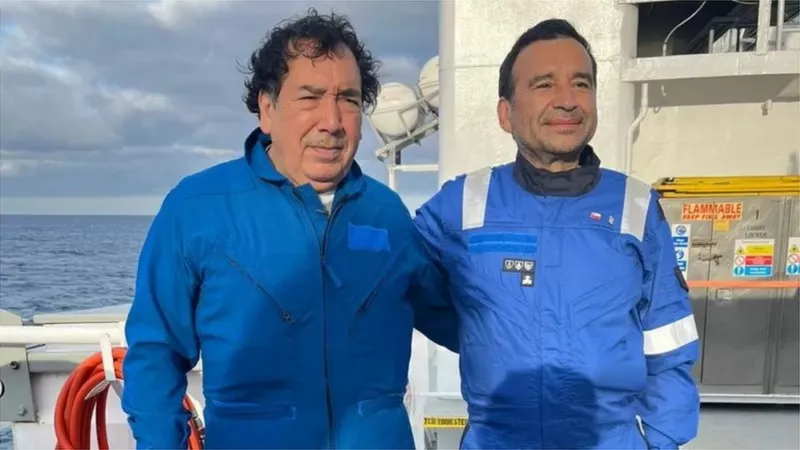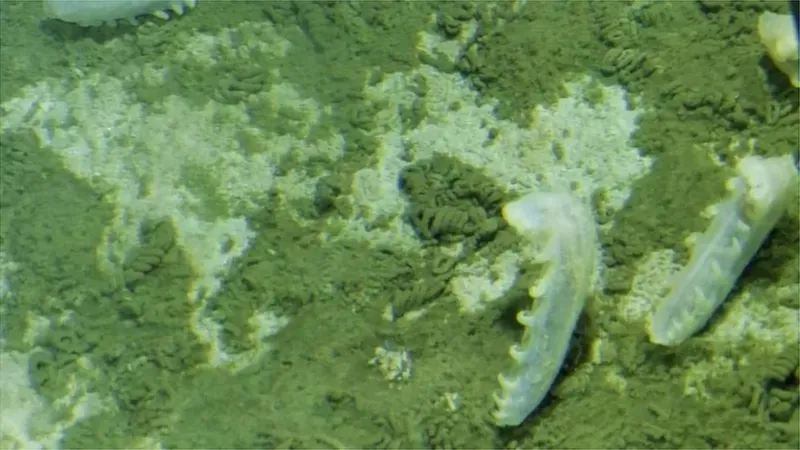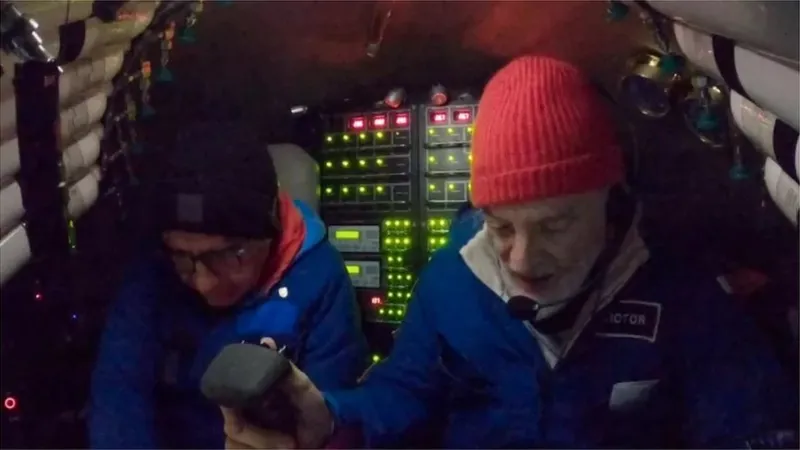For years, Chilean naval scientists Osvaldo Oloa and Robin Escribano have wondered what it would be like to have a view of the Atacama Trench (deep ravine) between Chile and Peru.
The Atacama Trench is a deep ravine in the ocean that is more than 8,000 meters deep and so far no human has had direct access to it.
Oloa and Escribano have been the director and deputy director of the Millennium Institute of Oceanography at the University of Concept in Chile, respectively. He had resigned from his post to study the surface of the trench.
Together with his team, he mapped the geographical location of the deep sea for the first time, and in 2018, during an expedition, he took some pictures and videos of the place and collected water samples and water in its bottom. Obtained DNA samples of strange creatures living inside.
He says that until then, going so deep was not part of his study because going into that depth and seeing what was needed was technically no less than going to the moon.
However, the two scientists landed in the trench last week with the American expedition Joe Victor Veskovo. It should be noted that the American expedition that Victor became the first person to visit the five deepest places of the five seas in the year 2019. They used a specially designed submarine to dive into the world's deepest seabed.
Thus Oluwa, Eskribano and Veskovo became the first people to descend into the ditch.
He made two in-depth trips. Each of the two tours lasted a total of ten hours, and they made all the preparations for it, including getting out of the body the night before going into the water, wearing warm clothes.
During two separate voyages, first Olua and then Eskribano traveled this trench with Vascovo. They used a small oval-shaped titanium submarine made by Florida's Triton Submarines Company. It was covered with a protective layer of synthetic foam.
Based on the legendary novels of Ian Banks, the submarine was named 'Limiting Factor' which would not be out of place if called a technical miracle and it would open its doors from time to time for discovery and research in the so-called headal zone of the oceans as usual. Has been It should be noted that the area after 6,000 meters in the sea is called the head zone.
Oluwa, 60, told the BBC's Mando: "It was the biggest adventure of my life and the highest point of my career as a marine science researcher." He said this a few minutes before the dive while he was still at the pressure drop mothership.
Silence and music on the seabed
The interior of the submarine is dark brown, with two comfortable chairs, and an oxygen tank and switches for all electronics. Below are three small windows overlooking the sea floor. He explains: "I was impressed by his light-heartedness and his silence, a silence where communication with the surface was only disturbed."
According to a map drawn the day before it landed, the depth was 8,069 meters and it took them three and a half hours to reach there. Oluwa thought he would get bored on the trip, but kept listening to music while talking to Veskov.
During this in-depth journey, Olua played two songs by Chilean singer and songwriter Manuel Garcia, accompanied by Moon Le Furte. They also showed Veskovo pictures of their children living in Sweden.
Veskovo, in turn, played The Eagles Group's Tequila Sunrise, and explained how he was inspired to dive deeper. Then, amidst the gossip, he decided that when he returned to Earth, he would watch the Spanish series El Sid, and he did.
Going down into the depths, they saw an opportunity and ate half their sandwiches. Viscov کا's sandwich was tuna, while Oluwa's was an egg and salad sandwich.
Once they reached the surface of the trench, Veskovo cleverly propelled the submarine to the shores of valleys and cliffs from which he was to acquire the characteristics and important information of the region.
"We also encountered a large number of sea cucumbers, a type of sea cucumber that is also found in other seas, but it was abundant here," says Olua.
"But as a microbiologist, if I wanted to see anything in this campaign, it was to look for germ colonies. And it was unusual to see it with our own eyes, as their presence at a depth of more than 8,000 meters in the Atacama Trench was confirmed for the first time.
City Architects Insects
For 64-year-old Robin Escribano, the experience was just as exciting two days later.
Because of their interest in animals, Veskovo descended with them only 7,330 meters to find a large number of animals, and in search of them he stayed on the eastern slope of the ocean valley.
They found unexpected creatures living in such depths as cold water corals and lone starfish. They had the opportunity to observe more animals here than any other trench (trench) studied so far. These included polychaet bugs, amphipod crustaceans, and other handled creatures that have yet to be studied.
As soon as Escarbano got out of the submarine and stepped on the deck of the ship, he joked: "They told me we had to study the pit, but they didn't tell us we had to go there."
"It was like a magical city, like landing on another planet and seeing the structures created by the creatures there. I imagined these were small towns, with insects and crustaceans passing through the layers.
The Atacama Hedel campaign also produced high-resolution maps of various parts of the Atacama Trench, one of the longest cracks in the depths of the sea, 5,900 km long. It is a massive formation that occurs at the point where the Nezka Plate sinks beneath South America and causes earthquakes and tsunamis in the region.
These maps will play a key role in determining the best place to install sensors for a future project to establish the first deep sea observation system. And this is undoubtedly a great effort on the part of the Chilean scientific community.
It will study how the medical, biochemical and biological conditions in the area change over time. It will provide a scientific basis for understanding the effects of climate change on deep waters in the future and will help to understand the causes of major earthquakes and tsunamis in the region.
"We had a unique opportunity to make a big leap in Chile's marine science and I am confident that this achievement will inspire new generations," Oloa said.
Veskovo, on the other hand, says he is determined to continue mapping tens of thousands of square kilometers of maritime boundaries each month. This mapping is taking place as part of a global campaign to complete the world's seabed mapping by 2030.








2 Comments
Collection of info is here keep up the good work ��❤️
ReplyDeleteAmazing 💜
ReplyDelete